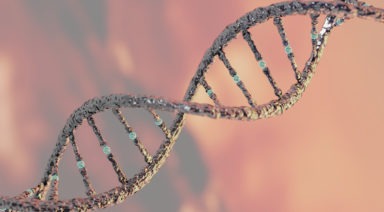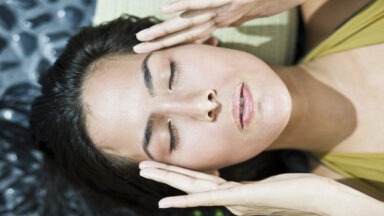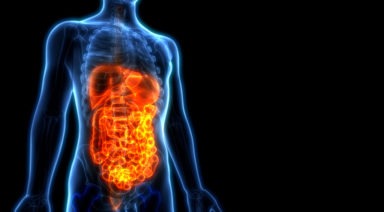Healing with Sound, Frequency, and Vibration

Many associate illness and disease with prescriptions and interventions such as surgery. Allopathic medicine and science have traveled a narrow path built on chemical substances and sharp instruments rather than energy.
But the ancients recognized sound, vibration, and frequency as powerful forces that influence life all the way down to the cellular level. The gifted Greek philosopher Pythagoras prescribed music as medicine, asserting that the musical intervals he discovered are clear expressions of sacred geometry. He stated that music is the phenomena of numbers in time, reflecting the structures of nature, and has the power to restore balance in an organism.
Sound Healing Research
According to a study published by the National Institute of Health, “Music effectively reduces anxiety for medical and surgical patients and often reduces surgical and chronic pain. [Also,] Providing music to caregivers may be a strategy to improve empathy, compassion, and care.” In other words, music is not only good for patients; it’s good for those who care for them.
A 2010 Finnish study observed that stroke patients who were given access to music as cognitive therapy had improved recovery. Other research has shown that patients suffering from the loss of speech due to brain injury or stroke regain it more quickly by learning to sing before trying to speak. The phenomenon of music facilitating healing in the brain after a stroke is called the “Kenny Rogers Effect.”
For those struggling with addiction and substance dependencies, learning to play an instrument may play an important role in recovery. A study at the University of Wisconsin showed that exposure to the right music, tones, and frequencies produces dopamine, which is in short supply for the nervous system during the withdrawal process.
“If you want to find the secrets of the universe, think in terms of energy, frequency, and vibration.” —Nikola Tesla
Singing bowl bathing is gaining popularity as a method to reduce stress and anxiety and to promote well-being. Laying down with eyes closed, participants listen while different bowls are struck and toned by a practitioner.
Studies show that this practice, called “sound bathing,” directly reduces anxiety and depression; both are related to increases in disease. According to one study, “Sixty-two women and men with an average age of 50 reported significantly less tension, anger, fatigue, and depressed mood after sound sessions. Tibetan singing bowl meditation may be a feasible low-cost low technology intervention for reducing feelings of tension, anxiety, and depression, and increasing spiritual well-being.”
A study published in the Southern Medical Journal (2005) demonstrated the beneficial effects of music in hospital settings. Researchers reported that “For children and adults, music effectively reduces anxiety and improves mood for medical and surgical patients, and for patients in intensive care units.” Researchers also noted that ambient music increased empathy in caregivers without interfering with the technical aspects of treatment.
Can Sound Fight Cancer?
In 1981, biologist Helene Grimal partnered with composer Fabien Maman to study the relationship of sound waves to living cells. Maman was also an acupuncturist and had previously discovered that by using tuning forks and colored light on acupuncture points he could achieve equal and even greater results than he could with needles.
For 18 months, Grimal and Maman worked with the effects of 30-40 decibel sounds on human cells. With a camera mounted on a microscope, the researchers observed uterine cancer cells exposed to different acoustic instruments (guitar, gong, xylophone) as well as the human voice for 20-minute sessions.
Using the nine-note Ionian Scale (C-D-E-F-G-A-B-C-D), Grimal and Maman observed that when exposed to sound, cancer cells lost structural integrity until they exploded at the 14-minute mark. Far more dramatic was the sound of a human voice — the cells were destroyed at the nine-minute mark.
Next, Maman and Grimal worked with two women with breast cancer. For one month, the women devoted three-and-a-half hours a day to “toning,” or singing the scale. One woman’s tumor became undetectable, meaning it simply disappeared. The other woman underwent surgery. Her surgeon reported that her tumor had shrunk dramatically and “dried up.” It was removed and the woman had a complete recovery and remission.
Maman said, “Cancer cells cannot maintain their structure when specific sound wave frequencies attack the cytoplasmic and nuclear membranes. When the vibratory rate increases, the cells cannot adapt or stabilize themselves and die by disintegrating and exploding.”
Sound Healing Technology
According to a paper published on the Institute of Noetic Science website, “Since its development as a therapy in Australia over 40,000 years ago, sound healing has been used to aid in the treatment of mental and physical illnesses and injuries, as well as to assist in the dying process. Though originally performed using only the yidaki, or didgeridoo, sound healing now involves a wide array of instruments (tuning forks, crystal bowls, drums, ultrasonic devices) as well as human and animal vocalizations.”
One elegant piece of sound healing technology was the inspiration of alternative health practitioner Lilly Whitehawk. Combining her observations of the beneficial effects of specific sound frequencies with her knowledge of quantum physics and physiology, Whitehawk envisioned a healing tool combining ancient knowledge and modern technology. Confirming Maman’s findings, Whitehawk observed that the human voice is the most effective for sound healing, followed by singing bowls and tuning forks.
Partnering with a friend and client Larry Doochin, Whitehawk began the process of bringing her vision to life. “Larry had the faith in the project to go all in and help me make it happen,” she said. After working with a studio engineer, software, and hardware developers, the partners created the HUSO — a small box that delivers “uniquely enhanced human toning sounds” to the body via headphones and pads placed on acupuncture meridians.
Whitehawk believes that the body’s fascia, a network of fibrous tissue that wraps around organs and muscles, can carry toned frequencies throughout the body. The partners also discovered that digital recording technology eliminated essential subtle frequency ranges needed for optimal benefits and results, so they recorded in a “lossless” non-digital mode.
Their clients report improved general health and well-being, better sleep and mental focus, and enhanced performance. Parents of children with high sensitivity and ADD say that their children have better sleep and focus as well as enhanced self-regulation skills. “HUSO utilizes the scientific principles of resonance and entrainment to return an out-of-balance body system to health and harmony. It is non-invasive, safe, and effective,” Whitehawk said.
“The effect is similar to what happens when you experience authentic indigenous shamanic healing using sounds of chanting, toning, drums, rattles, whistles, flutes, and bells. You are hearing the sounds, but also feeling the vibrations from those sounds in your body. These are very powerful transformative experiences. I have seen miraculous things occur that modern science would say are impossible. Yet they happen… again and again,” Whitehawk said.
Sound, Frequency, and Pain Management
Medsonix, a publicly held company, manufactures a medical device that delivers low-frequency sound to increase blood flow and decrease inflammation and pain. Non-invasive and drug-free, the technology is used by health care providers for pain management.
Beginning at age 13, Donatella Moltisanti was plagued by excruciating menstrual pain leaving her bedridden for one full week out of each month. Things changed unexpectedly when Moltisanti began studying singing and music in her late teens. She noticed that she had less pain each month. Later she studied vocal techniques that brought additional healing to her body and could be of benefit to others. Over time, Moltisanti learned to combine her vocal gifts with a healing discipline that includes crystal and singing bowls.
Researchers at McGill University have established that music calms children visiting potentially frightening pediatric emergency rooms. Another study notes that patients who listened to soothing music experienced less pain during the insertion of intravenous (IV) tubing.
An article in “The British Journal of General Practice,” notes that music has a direct effect on pain levels. Responses to a questionnaire sent to a group of chronic pain patients showed that “Those who listened to music more frequently had a higher quality of life, suggesting that music can lessen chronic pain.”
The Future of Sound and Medicine
Quoting British physicist Colin McClare, Dr. Bruce Lipton said, “Information can be carried by chemistry, and information can be carried by vibration. The question is whether one is better than the other.” Lipton explains that chemical reactions transfer only about two percent of information — 98 percent dissipates as heat loss. Information transmitted by frequency and vibration (energy) passes nearly 100 percent of the information. Lipton added that chemical signals travel through fluids at a speed of about one foot per second; vibration, resonance, and frequency (sound) travel at 186,000 miles per second.
The visionary Rudolf Steiner said that “Pure tones will be used for healing before the end of the [20th] century.” Indeed, that has happened, but there is much work to be done in identifying how specific sound and energy frequencies affect the body in specific ways. But with the number of studies underway today, it should not be long before sound therapy technology is embraced by mainstream medicine as a powerful complementary therapy.
How to Physically Manifest Healing Energy Through Your Chakras

The mind is a wondrous instrument that is capable of so much more than modern science can yet understand, including how it is able to manifest physical healing. Bill McKenna, creator and founder of Cognomovement, explains his work with people suffering from physical, emotional, energetic, and spiritual issues, finding that the mind is so powerful it can manifest our desires into reality.
McKenna’s experience led him to understand how the mind affects our energetic fields, which, in turn, affect our states of health (and achieving our desired physical outcomes). While this concept is common within ancient Eastern teachings, we are now realizing how the energies of the chakras are connected to what manifests in our lives.
By mindfully releasing attachments to our memories and experiences, McKenna says that it’s possible to proactively feel and move our energy to create a state of mental, spiritual, physical, and emotional well-being. His method for such manifestation is through visualizations and tactile exercises that disconnect us from negative thoughts.
McKenna’s groundbreaking book, “The Only Lesson,” is testimony to his work with the mind-body connection and details his life-changing spiritual awakening after having studied with a number of master teachers. This has culminated in his deep understanding of the secrets of self-discovery and the ability to create miraculous changes in his life and the lives of others.
Regina Meredith sets the stage when she adds, “oftentimes when we don’t manifest, it’s because we have some unresolved issues.”
McKenna agrees that if we didn’t have fear, our health and wellbeing would have already manifested from our energetic field. So it’s a matter of finding out what is in conflict with our desired manifestation. For most of us, says McKenna, it is some form of fear, ironically including what may happen if our manifestation comes to fruition. “The good news is that we can actually clear our field” by touching the blockage until it is gone.
McKenna says that thought forms are fragile relative to the entire field of energy and are therefore easy to dissipate and unblock. This will open the door to manifesting what we truly want.
In this interview with McKenna, we are prompted to ask what is blocking the manifestation of what we want out of life. He says the answer is thought, though, unlike other teachers, he shows how thought is palpable—it’s a tangible material form that can be dissipated and removed.
Each blockage is interdimensional and described by McKenna as “a quantum wobble” that can be dealt with more easily than we may have once believed. When the blockage is removed, he shows how to move the object of your desire down through the chakras to make it manifest.




































